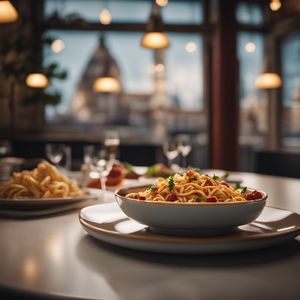
Dish
Flambéed Dessert
Flambéed desserts can be made with a variety of fruits, such as peaches, apples, or bananas. The fruit is typically sautéed in butter and sugar, then flambéed with a high-proof alcohol such as brandy or rum. The alcohol is lit with a match or lighter, and the flame is allowed to burn until it extinguishes on its own. The result is a warm, caramelized fruit that is often served with ice cream or whipped cream. Flambéed desserts require some skill and caution, as the flames can be dangerous if not handled properly.
Origins and history
The technique of flambéing originated in France in the 1800s, and was popularized by the famous chef Auguste Escoffier. Flambéed desserts became a staple of fine dining in the early 20th century, and are still a popular choice for special occasions and celebrations.
Dietary considerations
Flambéed desserts are high in sugar and calories, and should be enjoyed in moderation. They are not suitable for individuals with alcohol sensitivities or allergies.
Variations
Variations of flambéed desserts include Bananas Foster, Cherries Jubilee, and Crepes Suzette. Each dish features a different fruit and alcohol combination, but the basic technique remains the same.
Presentation and garnishing
Flambéed desserts should be served immediately after being flambéed, while they are still warm and caramelized. A sprinkle of powdered sugar or a drizzle of caramel sauce can add an extra touch of sweetness and visual appeal.
Tips & Tricks
When flambéing, be sure to use a long-handled pan and keep a lid nearby in case the flames get out of control. Always use caution when working with open flames, and never pour alcohol directly from the bottle into the pan.
Side-dishes
Flambéed desserts are often served with ice cream or whipped cream, but can also be paired with a simple cake or cookie. The dessert should be the star of the show, so it's best to keep the side dishes simple and complementary.
Drink pairings
Flambéed desserts pair well with sweet, fortified wines such as port or sherry. A glass of cognac or brandy can also be a nice accompaniment.









